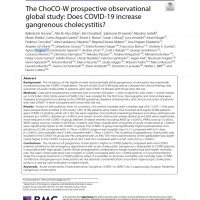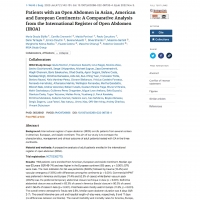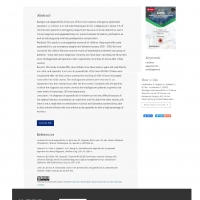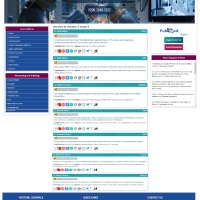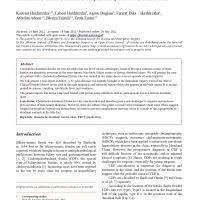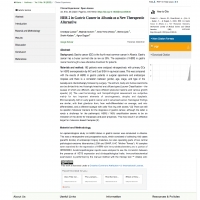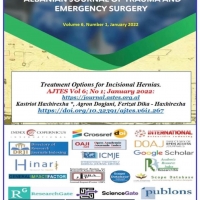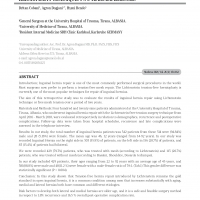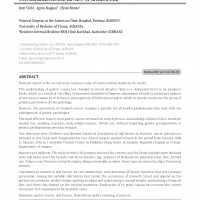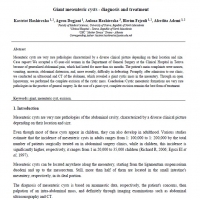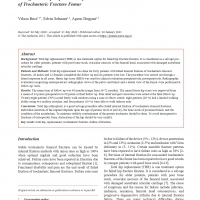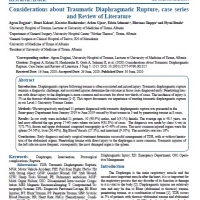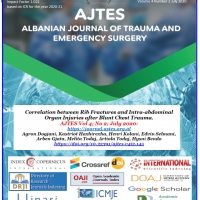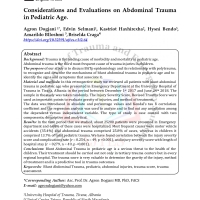Introduction: Diaphragmatic rupture following trauma is often associated and missed injury. Traumatic diaphragmatic rupture remains a diagnostic challenge, and associated injuries determine the outcome in those cases diagnosed early. Penetrating trauma with direct injury to the diaphragm is more common and accounts for about two-thirds of cases. The incidence of injury is 5% in thoracic-abdominal trauma [1-3]. This report documents our experience in treating traumatic diaphragmatic rupture in our Level 1 University hospital of Trauma, Tirana, Albania.
Material and Methods: We retrospectively analyzed 11 patients diagnosed with a traumatic diaphragmatic rupture presented in the Emergency Department from January 2019 to June 2019 caused by blunt trauma in 3 and by penetrating trauma in 8 cases.
Results: In our study were included 11 patients, 10 (90.9%) males, and 1(9.1%) female. The average age is 48.5 years, we had most affected the age group 17-60 years where we have 9(81.8%) of cases. The diagnosis was made by chest X-ray in 7(72.7%), thorax, and upper abdominal computed tomography in 45.40% of cases. The most common injured organs were the spleen (54.50%), liver (36.40%), Big Blood Vessels (27.3%), and intestinal (9.10%). The mortality rate was 18%.
Conclusions: Early diagnosis and early surgical treatment determine successful management of TDR, with or without herniation of the abdominal organs. Penetrating trauma with direct injury to the diaphragm is more common. Traumatic injuries on the left side are more frequent, consequently, the most damaged organ is the spleen.
Keywords: Diaphragm; Rupture, intervention, post-surgical complications;




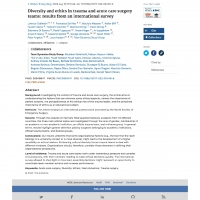
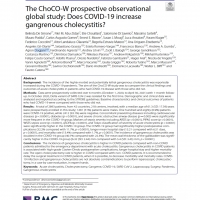
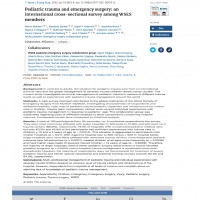
_thumbnail.png)
